Practice Free SC-300 Exam Online Questions
You have a Microsoft 365 E5 subscription.
You need to ensure that users are prompted to accept a custom terms of use (Toll) agreement when they sign in to the subscription.
What should you configure?
- A . an access package
- B . a Conditional Access policy
- C . a lifecycle workflow
- D . an authentication method
You have an Azure subscription named Sub1 that contains a user named User1.
You need to ensure that User1 can purchase a Microsoft Entra Permissions Management license for Sub1. The solution must follow the principle of least privilege.
Which role should you assign to User1?
- A . User Access Administrator
- B . Permissions Management Administrator
- C . Billing Administrator
- D . Global Administrator
You have an Azure Active Directory (Azure AD) tenant that contains the objects shown in the following table.

Which objects can you add as members to Group3?
- A . User2 and Group2 only
- B . User2, Group1, and Group2 only
- C . User1, User2, Group1 and Group2
- D . User1 and User2 only
- E . User2 only
HOTSPOT
Your network contains an on-premises Active Directory domain named contoso.com.
The domain contains the objects shown in the following table.
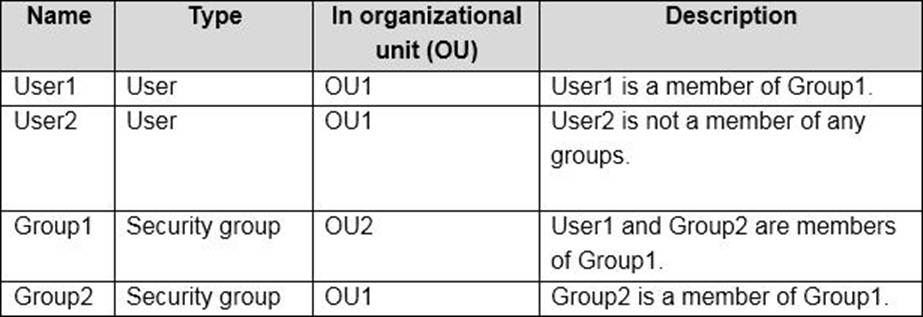
You install Azure AD Connect.
You configure the Domain and OU filtering settings as shown in the Domain and OU Filtering exhibit. (Click the Domain and OU Filteringtab.)
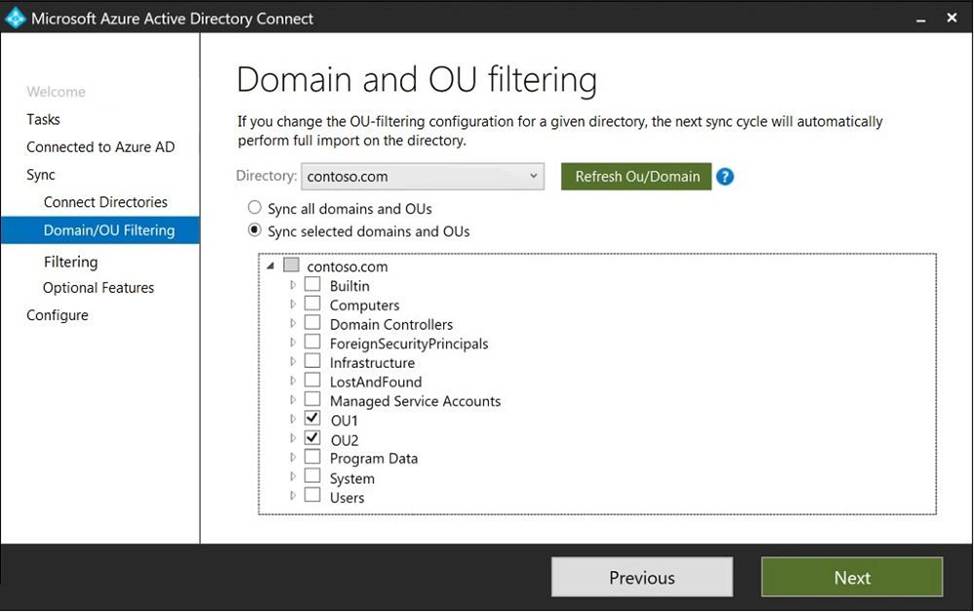
You configure the Filter users and devices settings as shown in the Filter Users and Devices exhibit. (Click the Filter Users and Devices tab.)
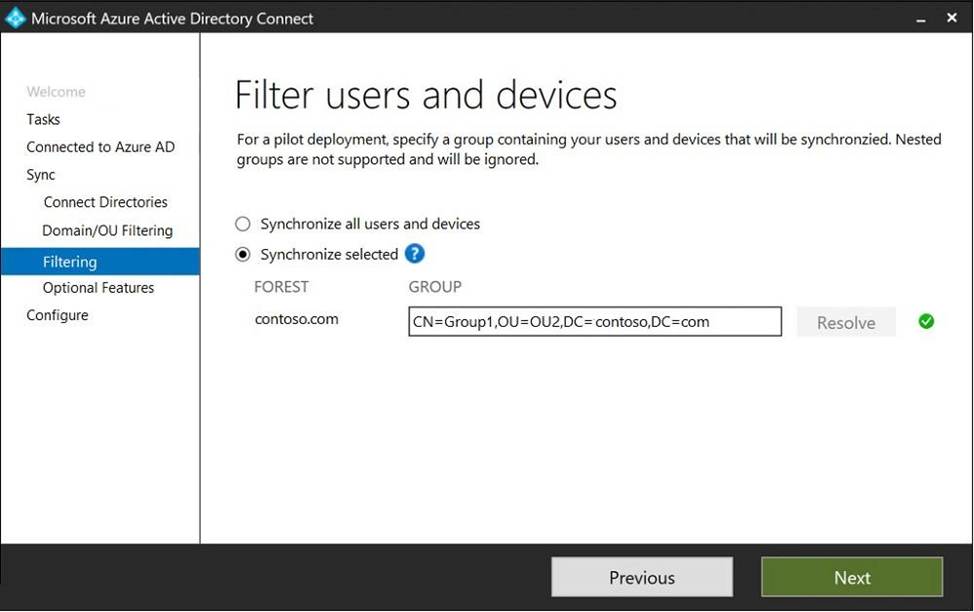
For each of the following statements, select Yes if the statement is true. Otherwise, select No.
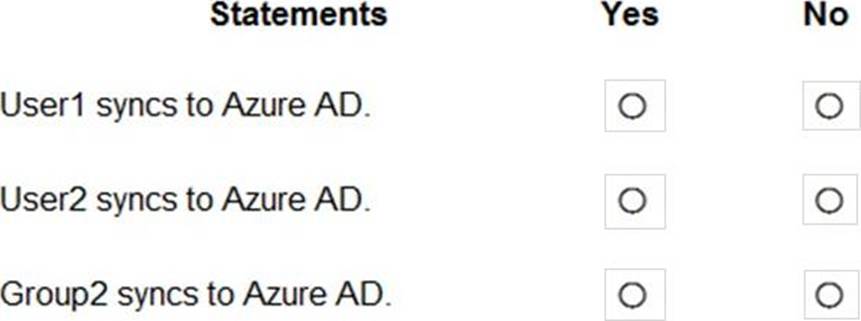
You have a Microsoft Entra tenant that contains the users shown in the following table:

Admin4 creates a Conditional Access policy named Policy1 by using the "Require multifactor authentication for Azure management" template.
Which users will be required to use multi-factor authentication (MFA) the next time they sign in?
- A . Admin2 and Admin3 only
- B . Admin1 and Admin4 only
- C . Admin1, Admin2, and Admin3 only
- D . Admin1, Admin2, Admin3, and Admin4
You have a Microsoft 365 E5 subscription that uses Microsoft Defender for Cloud Apps.
You plan to increase app security for the subscription.
You need to identify which apps do NOT require user authentication
What should you do in the Microsoft 365 Defender portal?
- A . Create a discovered app query.
- B . Create a snapshot Cloud Discovery report.
- C . Create an OAuth policy and review alerts.
- D . Review the cloud app catalog.
HOTSPOT
You have an Azure AD tenant contains the users shown in the following table.

In Azure AD Privileged Identity Management (PIM), you configure the Global Administrator role as shown in the following exhibit.
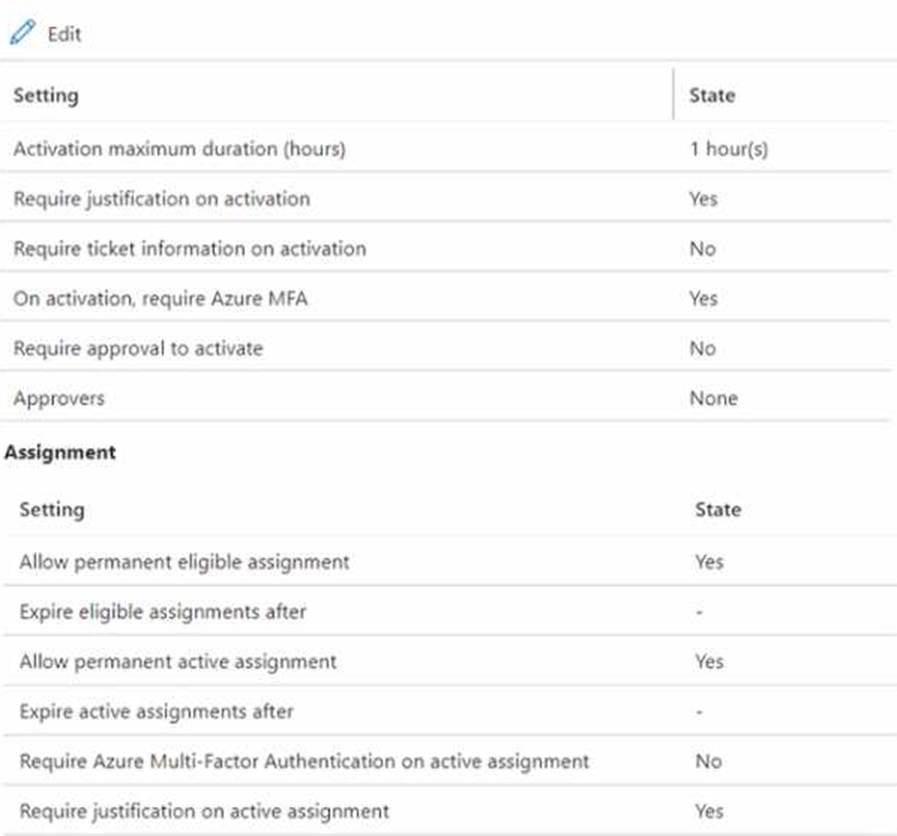
User 1 is eligible for the Global Administrator role.
For each of the following statements, select Yes if the statement is true. Otherwise, select No. NOTE: Each correct selection is worth one point.

You have an Azure Active Directory (Azure AD) tenant named contoso.com.
All users who run applications registered in Azure AD are subject to conditional access policies.
You need to prevent the users from using legacy authentication.
What should you include in the conditional access policies to filter out legacy authentication attempts?
- A . a cloud apps or actions condition
- B . a user risk condition
- C . a client apps condition
- D . a sign-in risk condition
You have accounts for the following cloud platforms:
• Azure
• Alibaba Cloud
• Amazon Web Services (AWS)
• Google Cloud Platform (GCP)
You configure an A2ure subscription to use Microsoft Entra Permissions Management to manage the permissions in Azure only.
Which additional cloud platforms can be managed by using Permissions Management?
- A . AWS only
- B . Alibaba Cloud and AWS only
- C . Alibaba Cloud and GCP only
- D . AWS and GCP only
- E . Alibaba Cloud, AWS, and GCP
You have an Azure Ad tenant that contains the users show in the following table.

You create a dynamic user group and configure the following rule syntax.
![]()
Which users will be added to the group?
- A . User1 only
- B . User2 only
- C . User3 only
- D . User1 and User2 only
- E . User1 and User3 only
- F . User1, User2, and User3


